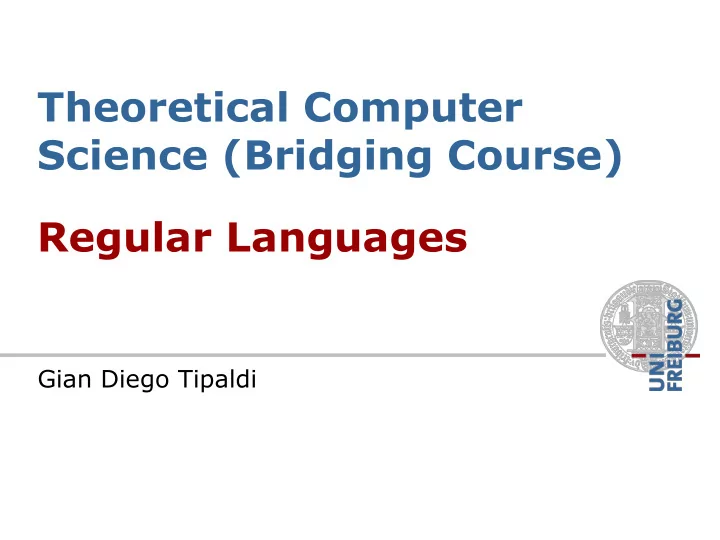

Another Example b b a a GNFA: DFA: 1 2 1 2 ε a a ε b b a a s a b b ε 3 3 aa ∪ b Rip 1: Rip 2: a(aa ∪ b)* 2 a s a ε ab a s ba ∪ a (ba ∪ a) (aa ∪ b)* ∪ ε a(aa ∪ b)*ab ∪ b ε 3 b 3 bb (ba ∪ a) (aa ∪ b)*ab ∪ bb Rip 3: (a(aa ∪ b)*ab ∪ b)((ba ∪ a) (aa ∪ b)*ab ∪ bb)*((ba ∪ a) (aa ∪ b)* ∪ ε ) ∪ a(aa ∪ b)* s a
Equivalence Proof
Equivalence Proof
Equivalence Proof R 4 q 1 q 2 (R 1 )(R 2 )* (R 3 ) ∪ R 4 q 1 q 2 R 1 R 3 q rip R 2
Nonregular Languages Finite automata have finite memory Are the following language regular? n n {0 1 | 0} B n { | h as an eq u al n u m b er o f 0 s an d 1 s} C w w { | h as an eq u al n u m b er o f o ccu ren ces o f 0 1 an d 1 0 } D w w How can we prove it mathematically?
The Pumping Lemma
Proof Idea Let M be a DFA recognizing A Let p be the numbers of states in M Show that s can be broken into xyz Prove the conditions holds
Proof Idea Let M be a DFA recognizing A Let p be the numbers of states in M Show that s can be broken into xyz Prove the conditions holds
Proof Idea Let M be a DFA recognizing A Let p be the numbers of states in M Show that s can be broken into xyz Prove the conditions holds
Proof of the Pumping Lemma
Use of the Pumping Lemma
Recommend
More recommend